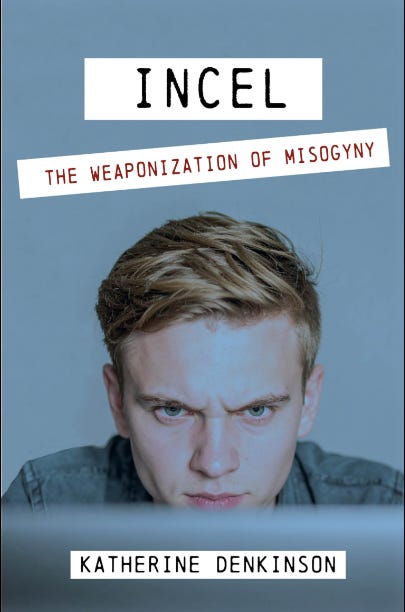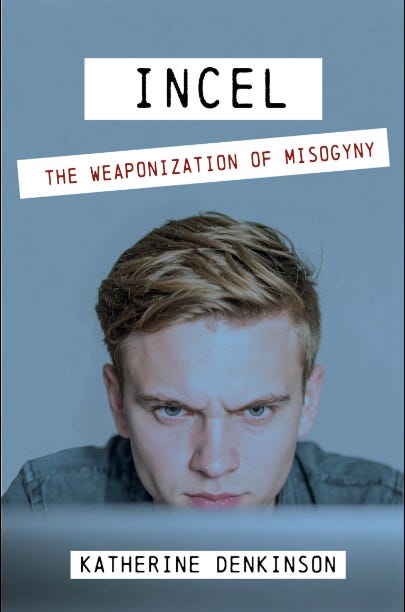Incel: The Weaponization of Misogyny
In an edited extract from her forthcoming book, Katherine Denkinson looks at the rise of incel ideology, and argues that prevention requires a radical rethink of our societal approach
On a balmy California evening in May 2014, a twenty-two-year-old student at Santa Barbara College emailed a 137-page, hate-filled manifesto to multiple people including his parents.
Writing that “all of [his] suffering on this world” had “been at the hands of humanity, particularly women”, he claimed to have been “cast out and rejected, forced to endure an existence of loneliness and insignificance … because the females of the human species were incapable of seeing the value in [him]”.
Repeating the sentiment in a seven-minute YouTube video, he promised a “day of retribution” against his perceived enemies. By the end of that day, seven people were dead, including the student himself. He had driven through his Isla Vista community and opened fire at random groups of people, before ultimately shooting himself in the head.
His name was Elliot Rodger and his actions turned him into the poster-boy for an obscure, online community known as incels.
Short for ‘involuntarily celibate’, the term was used by men who saw themselves as unattractive and blamed women for their inability to form relationships. Mostly unknown outside of Reddit and a few niche blogs, the community was often mocked and was seen more as an internet curio than a real cause for concern. Rodger’s manifesto changed that forever, as a deluge of news reports introduced the world to their violent ideation while “Saint Rodger” was canonised by the incel community.
The fact that Rodger did not specifically identify as an incel, and presented himself as being superior to them, did little to change what would become the dominant narrative; Rodger had done what they all dreamed of doing and all incels were potential “monsters”.
In the ten years since Rodger took this hateful ideology mainstream, there have been multiple killings attributed to incels, plus countless articles, investigations, and op-eds exploring their motivations. Whilst the initial exposure raised awareness of the movement, the continued moral panic has all but demolished the word’s original meaning. Rather than referring to a small subset of men, we now have a situation where all violent misogynists (and many non-violent, socially awkward men) are labelled incels whether they ascribe to the ideology or not.
The most recent example of this was the critically acclaimed 2025 Netflix drama Adolescence which has had a significant impact on the public perception of incels within the UK – the show was even discussed in political spheres as a reference point for approaching the “issues that many people don’t know how to respond to”. However, despite placing the rise of incel culture front and centre in the national consciousness, the drama played into the same misinformed stereotypes often repeated by tabloids about what an incel is in the modern world and only intensified moral panic of parents, teachers, and other care givers.
After spending eight years in incel spaces, fifteen years working in mental health, and a plethora of conversations with those affected by incel misinformation, it is time to change the narrative. Incels did not emerge from a social media chrysalis raging against the world. They are real people, not digital boogeymen, and, while the responsibility for incel attacks lies solely with the men who commit them, prevention requires a radical rethink of our societal approach.
The Power of Labelling
Over the last decade, ‘incel’ has become the go-to terminology when discussing violent misogyny, and incels themselves glorify those who die or get killed in the process of carrying out incel attacks, referring to them as ‘saints’.
However, it is clear from decades of crime statistics and related academic studies that incels did not invent the concept of misogynistic violence. The majority of serial killers (91.4% in the US) are male and their victims female, and there is a proven link between misogyny and mass shootings.
Research from the Office of National Statistics (ONS) shows that one in seven women have been stalked and their study included data from 1999 which showed that 76% of women who were killed by a former partner were stalked first. Historically speaking, men who can neither be with the woman they want, nor control the woman they’re with, have found multiple, usually violent, ways to punish women as a whole.
The labelling of these men as incels is becoming more common, but the number of actual incel attackers is far lower than the number of attackers labelled ‘incels’. The reasons for this are complicated and are heavily skewed by both social media and clickbait headlines.
In the sixteen years since George Sodini’s shooting, eighteen young men have either been arrested or killed during the planning or execution of so-called ‘incel attacks’. The viralising and subsequent misinformation that surrounds reporting of these attacks on social media has ensured that crimes labelled ‘incel’ now fall into three distinct subgroups.
Firstly, there are crimes committed by young men directly inspired by the incel ideas they have encountered online. Secondly, there are men committing crimes who have labelled themselves ‘incel’ because it guarantees media attention. In the third group (which is by far the most prevalent) are those engaging in misogynistic violence without any links to incel groups or claims of being involuntarily celibate, who get labelled as such anyway by social media users and the press.
Censorship Failures and Limited Resources
Over the last ten years our thinking about incels has been shaped by the media, social media, and mass panic to the point that they are now presented as a radicalised army, out to recruit our children in a war against women. Netflix drama Adolescence provided the latest commentary and did slightly better than most, opening the eyes of many to the subtleties of online communication and the inability of both schools and the police to tackle it. However, the writer’s suggestion that we simply “ban kids [from] social media” is not an option.
The problem is not that the internet or social media is intrinsically ‘bad’, but that it has grown faster than parents can keep up with, and its language changes so rapidly that, unless you are among the ‘Very Online’, it can feel completely overwhelming.
However, like it or not, we live in a world shaped by digital communication and denying our children the chance to learn how to use it will only stunt their intellectual growth. Crossing the road, walking from your home to the local shop, and swimming in the sea are all dangerous yet we do not lock our children in the house and hide them from such risks until adulthood. Instead, we teach them about the dangers and how to avoid them. We now need to do the same online.
Banning The Forum and other incel spaces from the internet and social media will have little impact and will (in many ways) make the problem worse. In 2022, after its campaigns were linked to multiple suicides, troll-site Kiwi Farms was banned from most webservers. Rather than stopping their behaviour, they simply moved the site onto the dark web where they still operate, and the same will likely happen if The Forum is ‘banned’.
The dark web is often presented as some mysterious internet zone that only tech-savvy hackers can access, but, in reality, it takes about five minutes on Google to work it out. While those whose internet usage revolves around social media apps may find it confusing, for the boys who end up on The Forum it is easy to navigate. By banning them from the ‘clear web’ (the internet that everyone sees and uses), we can console ourselves that the ‘threat’ is gone, but, in reality, all we will do is make it harder to challenge. We will also be confirming to those in incel spaces that the ‘normie’ world hates them, which will only push them further away.
On top of this is the fact that granting the Government the right to censor our children’s internet experience, effectively grants them the right to censor our own experiences. For those who believe that this is only a problem if you’re doing something wrong, the laws which govern ‘bad’ websites also determine whether MI6 can access your encrypted WhatsApp messages.
Excessive policing of big tech will ‘fix’ the incel problem on the surface whilst demolishing our own rights to digital privacy.
To rely upon censorship is to brush the underlying issues under the carpet, while creating more along the way, and is symbolic of a national refusal to both understand these issues and face them head on. A refusal which is evident in the staggeringly few resources available for those in a position to have meaningful impact on young people’s lives.
In the course of researching this book, I went looking for extra-familial resources dedicated to tackling incel culture and encountered an acute lack of groups, spaces, and understanding. Many schools and local councils have pages on their websites about incelibacy and incel beliefs, and most of what they publish is based in fact.
However, from talking to teachers it is clear that the way this is implemented varies wildly. Teachers themselves are overworked and short on time for pastoral care. The support for pupils vulnerable to incel ideology may be there in theory but, in practice, appears to be something of a dice-roll.
Katherine Denkinson worked in the mental health arena for many years before becoming a journalist and writer. She has written widely, including for Byline Times, on Incel culture, Andrew Tate, the Far Right and online radicalization. Her work has led to her frequent appearances as an expert commentator on these issues in national broadcasting, and in podcasts.
Incel: The Weaponization of Misogyny is published on 14 November by Aurora Metro Books.



